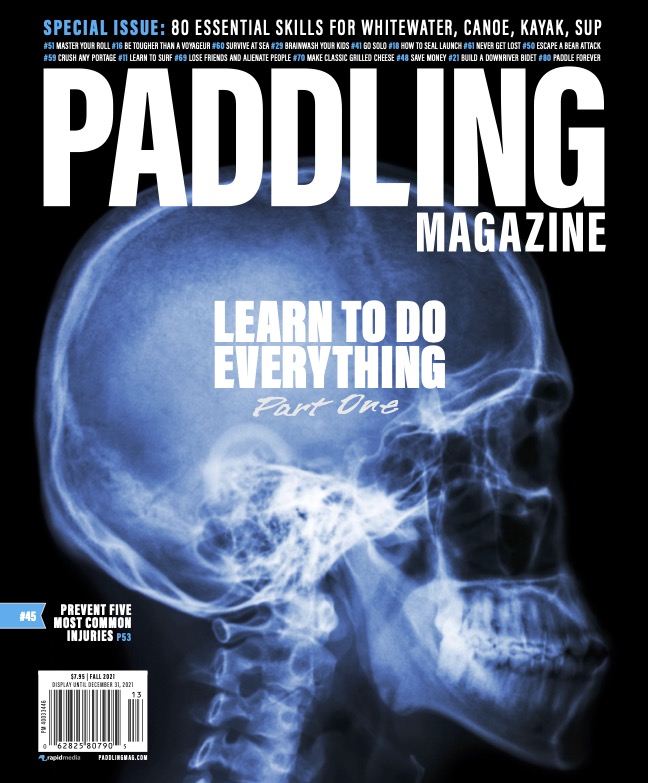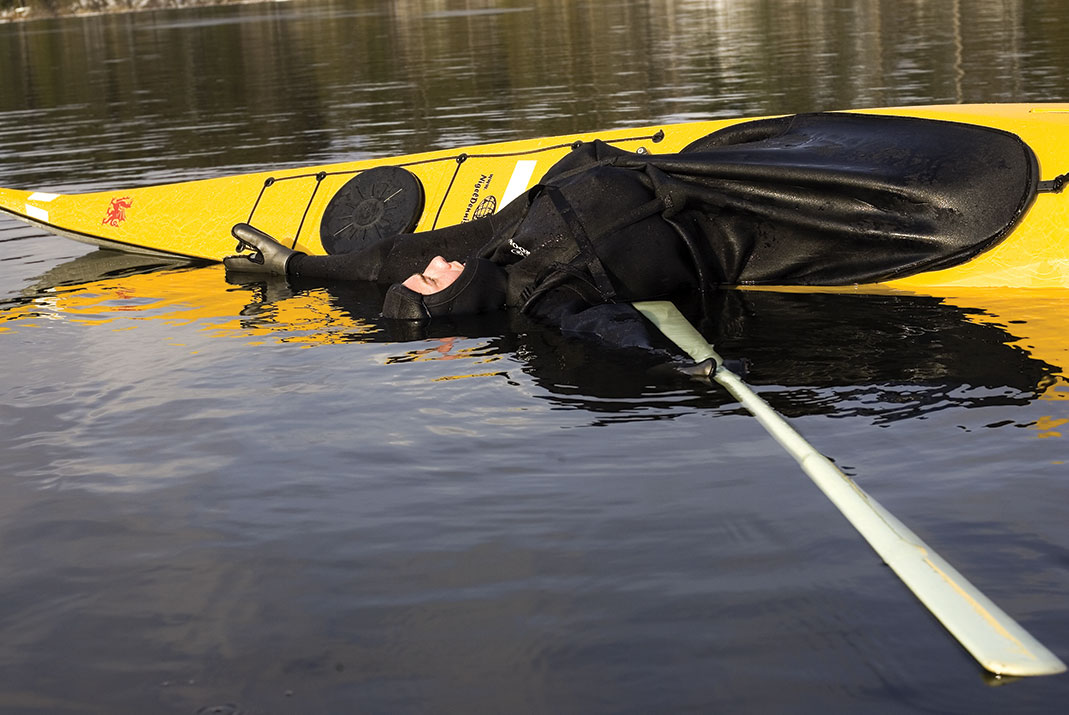Products You May Like
The first sea kayakers devised the balance brace as a means of gaining stability in rough water and a way to stretch out their lower bodies without leaving their boats. In the balance brace maneuver, the kayak is held at the capsize point indefinitely—without ever going over—using the flotation of the upper body and Greenland-style paddle. Pressure from one leg is needed to hold the paddler in the boat while the other is free to dangle. It’s almost as relaxing as a break on shore.
Modern-day paddlers should think of the balance brace as a party trick that’s practical. Not only does it look good; it also makes a solid rough-water survival position and is the basis of several Greenland rolls.
How to Stick the Kayak Balance Brace
1 Lean Back and Scull
Start off by leaning the kayak and sculling with the paddle to keep the boat upright. Lean back as far as you can on the stern deck and work on twisting at your hips to expose the back of your PFD to the water—think of arching your back. Use your lower leg—the one that’s in the water—to keep the boat from capsizing by exerting steady pressure on the foot and thigh braces. Relax the other leg—you can even take it off the foot brace.
2 Act Like an Outrigger
Now stop sculling altogether. Arch your back and let your head fall into the water; maintain a steady pressure on your lower knee; and hold the paddle motionless across your chest, allowing it to float to the surface. The boat should be kept as level as possible; your body acts like an outrigger to keep the kayak from capsizing.
3 Sit Back Up
Returning to the upright position from the balance brace is as simple as sitting up. It’s possible to scull your way up, but unnecessary. It’s easiest to bring your body over the back deck of the kayak by pivoting at your hips. Remember to bring your head up last.

This article originally appeared in Paddling Magazine Issue 65. Subscribe to Paddling Magazine’s print and digital editions here, or download the Paddling Magazine app and browse the digital archives here.
A properly executed kayak balance brace is almost as relaxing as a break on shore. | Feature photo: Scott MacGregor
